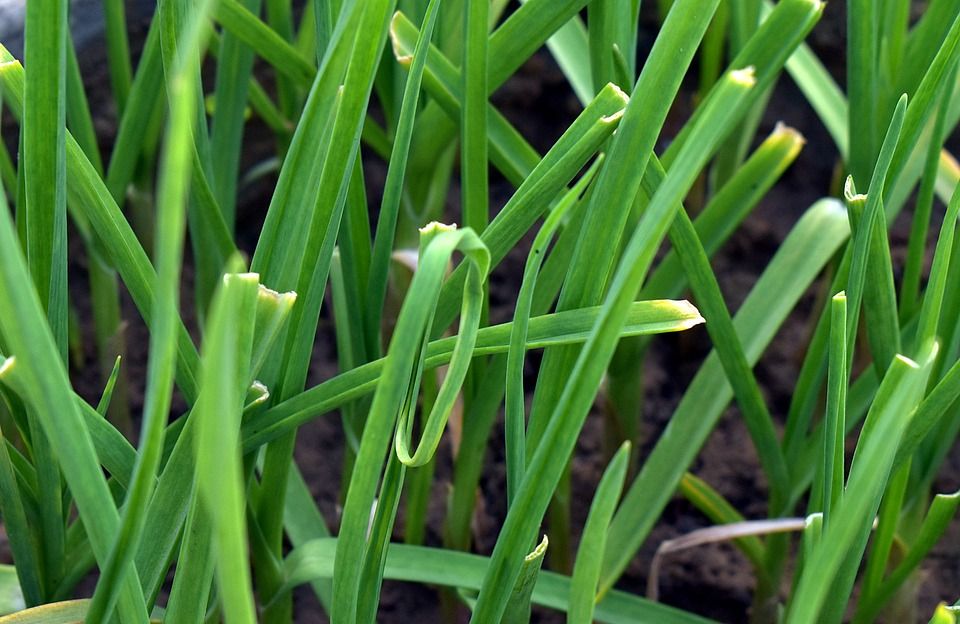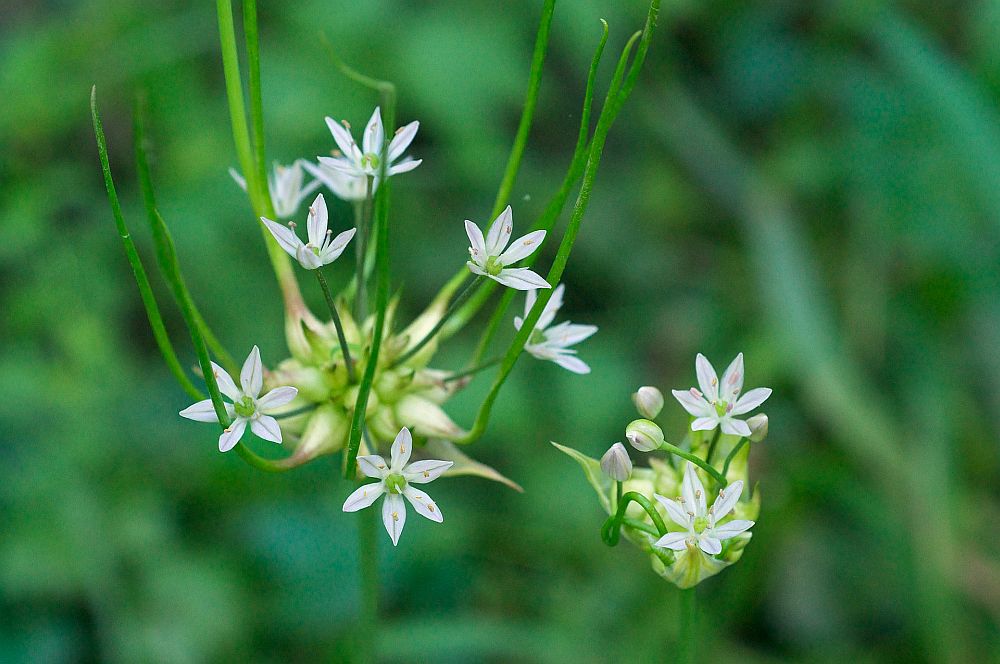How to Get Rid of Wild Onions in Your Lawn
Your garden grows a lot of plants. Some of those are good while others need to be eliminated with extreme prejudice.
The wild onion is one of those invasive plants that spread like wildfire in hay and lay claim to your precious garden or lawn. It's not just that it takes up space, these plants are not particularly landscape-material, not to mention that they also compete with other plants and leave you no room to grow anything else.

So how would you identify the wild onion in your garden and get rid of it? And once that is done, how would you make sure it doesn't come back? Read on to find out how to rid your garden of wild onions once and for all.
Wild Onion at a Glance
What really makes the wild onion (Allium canadense) such a big threat to your garden is that unlike other plants that propagate using only seeds, this weed uses seeds as well as underground bulbs to spawn new plants. That means you can't see them, or pluck their flowers to prevent them from spreading around. It's a winter perennial weed that attacks lawns and encroaches on flower beds and veggie patches alike.
Known as onion grass, wild onions are very much edible since they belong to the same family as onions and garlic.
Much like spring onion, you can have them in salads or in your cuisine. However, you should be wary of other plants that look much like wild onion yet are toxic. One of those is the Star of Bethlehem. In all appearances it looks just like a wild onion, however, it's very poisonous for humans and animals alike. So how can you tell that the weed in your garden is wild onion, not spring onion, or some other toxic plant?
Identification of Wild Onion Plants in your Garden
Whether you plan to eat your wild onion plants or just get rid of them, it's important to be able to identify them. For one thing, if you use the wrong chemical control method on the weed, it won't be of much help. Here are the most common characteristics to help you identify this invasive weed at a glance.
- The flowers of the wild onion are the first thing that gets your attention. They are shaped like a star and can either be white or pinkish.
- The leaves are slender and taller than those of the spring onion. Each leaf can grow between 6 to 12 feet.
- The leaves look like blades of grass which gives them this weed-like appearance.
- The smell of the wild onion is another thing that makes them easy to identify. The odor is so strong you would find it hard to keep a window overlooking the garden open.
- Wild onion and wild garlic often look similar. But the leaves of the wild onion are long, flat, and wide, while those of the wild garlic are tubular and hollow.
- This invasive weed can propagate either with seeds or bulbs. So even if you pluck the flowers to prevent pollination, the underground bulbs will grow into new plants that dot the whole garden at a fast rate.
How to Locate Wild Onion
Now that you know how to identify the wild onion and not mistake it for another weed, let's find out how to go looking for it. Rather than wait for the whole garden to be littered with pungent and unsightly wild onions, you should find and remove that weed early on.
The first sign that you have a wild onion infestation problem is the odor. It's strong, off-putting, and incessant. Let your nose guide you to the spot where the wild onion makes its presence known.
Usually, you'll find them growing in flower beds or other spots that you can't mow easily. Hedges, backyards, or even sidewalks are all fertile ground for this weed to establish its roots.
The plant usually grows in clumps. You can miss them. The blades of the weed are sharp and have a waxy feel about them. Combined with the strong oniony smell, you will know you have a problem on your hands and it's time to do something about it.
Wild Onion Removal

As usual, there are many ways to get rid of wild onion infestations in your property. Unlike other wild plants and weeds, wild onion plants will grow and propagate right under your nose even after you have cut off the flowers, stalks, and leaves. Because underground, the bulbs are still attached to the roots and they will pop up on the surface shortly after.
Here are the main methods of wild onion removal.
Organic Control
By organic control, we mean using non-chemical methods. You can go about removing wild onion plants either pulling them out with your hands or by mowing the area. Mowing is usually more effective since it digs the roots of the plant up and brings them to the surface. Go about collecting the bulbs and dispose of them safely.
But not all areas can be mowed. Your rose bed for example is not easy to mow unless you're willing to kill the roses as well. You can use your hands to pull the wild onion out one by one. Then use a trawl to dig up the soil, locate the bulbs, and remove them manually.
Chemical Control in Lawns
If the wild onion infestation is in such a scope that neither mowing nor manual digging up can control its spread, then you'll have to use herbicides as you would with any other weed. The problem with that approach is that there are no pre-emergent herbicides to prevent the wild onion from appearing in your lawn.
You can only use post-emergent solutions such as weed killers. Use your herbicide of choice to spray the lawn twice a year. The first time is in late October and then another spray in the winter. You might need a third spray in the early spring around the time the plants grow bulbs. Don't mow the lawn for two weeks after each spray to allow the herbicide time to set in and kill the roots and bulbs underground.
Chemical Control in Gardens
While it's easy to aim your herbicide sprayer at a patch in the lawn where the wild onions grow and spray them into oblivion, the same cannot be done in a garden. A garden has other desirable plants and grass that you want to keep. So spraying indiscriminately can backfire as you kill the flowers and tomato vines along with the pesky wild onions.
The key is to use the right nozzle. Most sprayers allow you to adjust the nozzle to control the type of spray that comes out. Don't use the fog or mist setting and opt instead for the stream even shower. A stream spray is more suitable with wild onions growing among rows of vegetables or flowering plants. The shower spray covers more ground and needs to be used with caution.
Keep in mind that the waxy leaves of the wild onion repel the herbicide so one spray is usually not enough. Aim your sprayer to the soil where the herbicide has a better chance of killing the roots and bulbs than the hardy leaves.
Wild Onion Prevention
We mentioned that when it comes to chemical control, there are no pre-emergent herbicides to prevent the wild onion from growing in your garden or lawn. If you want to stop the perennial weed in its tracks, you'll have to take certain precautions and keep a watchful eye for their odorous presence.
Fall and Spring Monitoring
You will need to monitor your garden or lawn twice a year. In early September and then again in early March. The fall is when the plant grows and in the spring it produces bulbs. If you see or smell any signs of the wild onion reappearing, use a herbicide to spray the soil and prevent the weed from taking root.
Experts recommend that you monitor the pH of your soil and to bring it down to 7 or even 6.8. Wild onion doesn't grow in this type of soil. Usually, mulch, organic compost, and rock dust are the best material to treat alkaline soil and reduce the pH to more tolerable levels.
Allium Canadense Herbicides
The active ingredient that kills wild onions in most herbicides is imazaquin. When using it, you need to make sure not to reseed your garden for at least 6 weeks. Even though imazaquin is an organic compound, it can have a lethal impact on seeds or seedlings in your garden.
After about a month or a month and a half, the soil becomes safe to seed and grow plants again.
How to Get Rid of Wild Onions in Your Lawn
Source: https://www.diys.com/wild-onion/
0 Response to "How to Get Rid of Wild Onions in Your Lawn"
Post a Comment